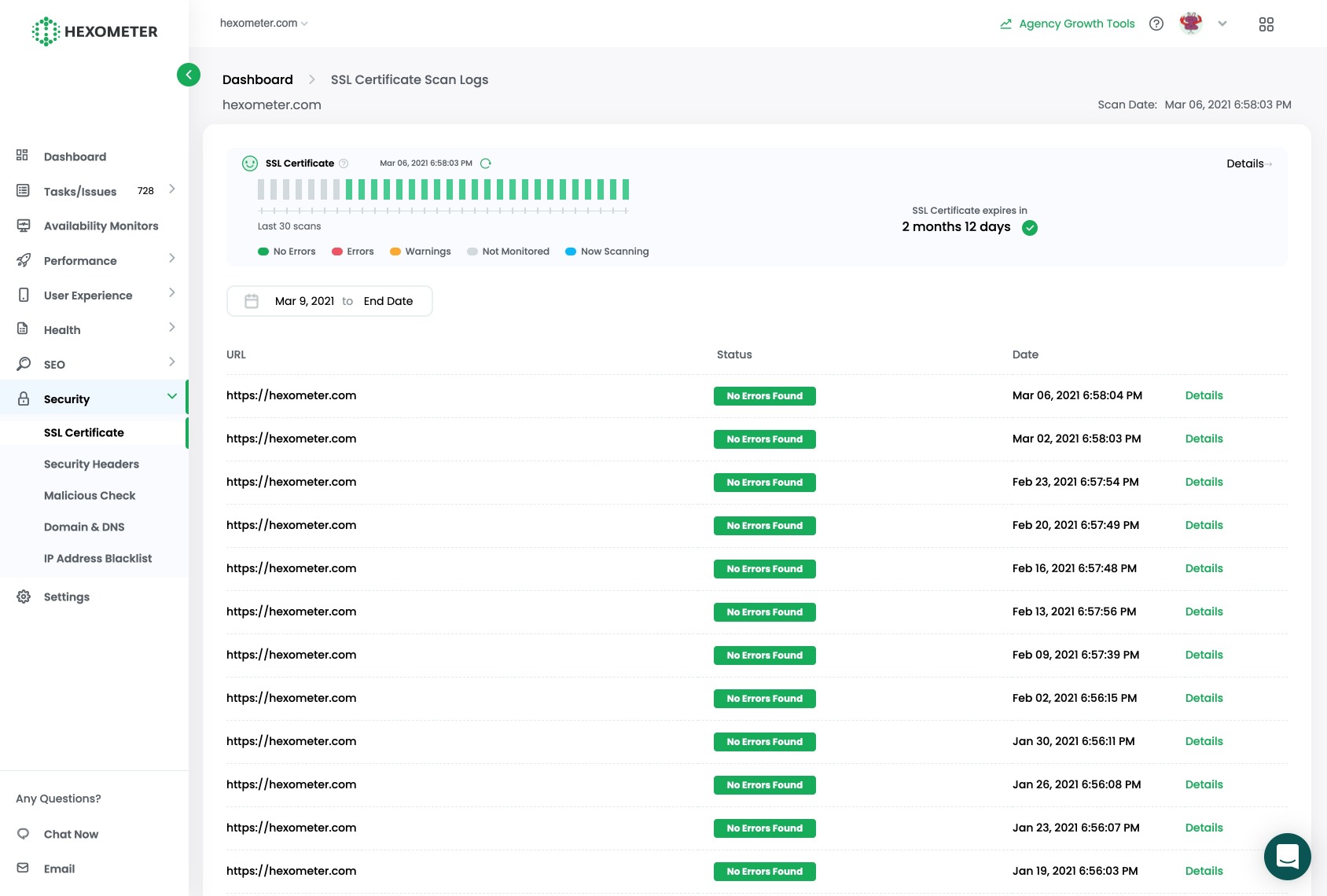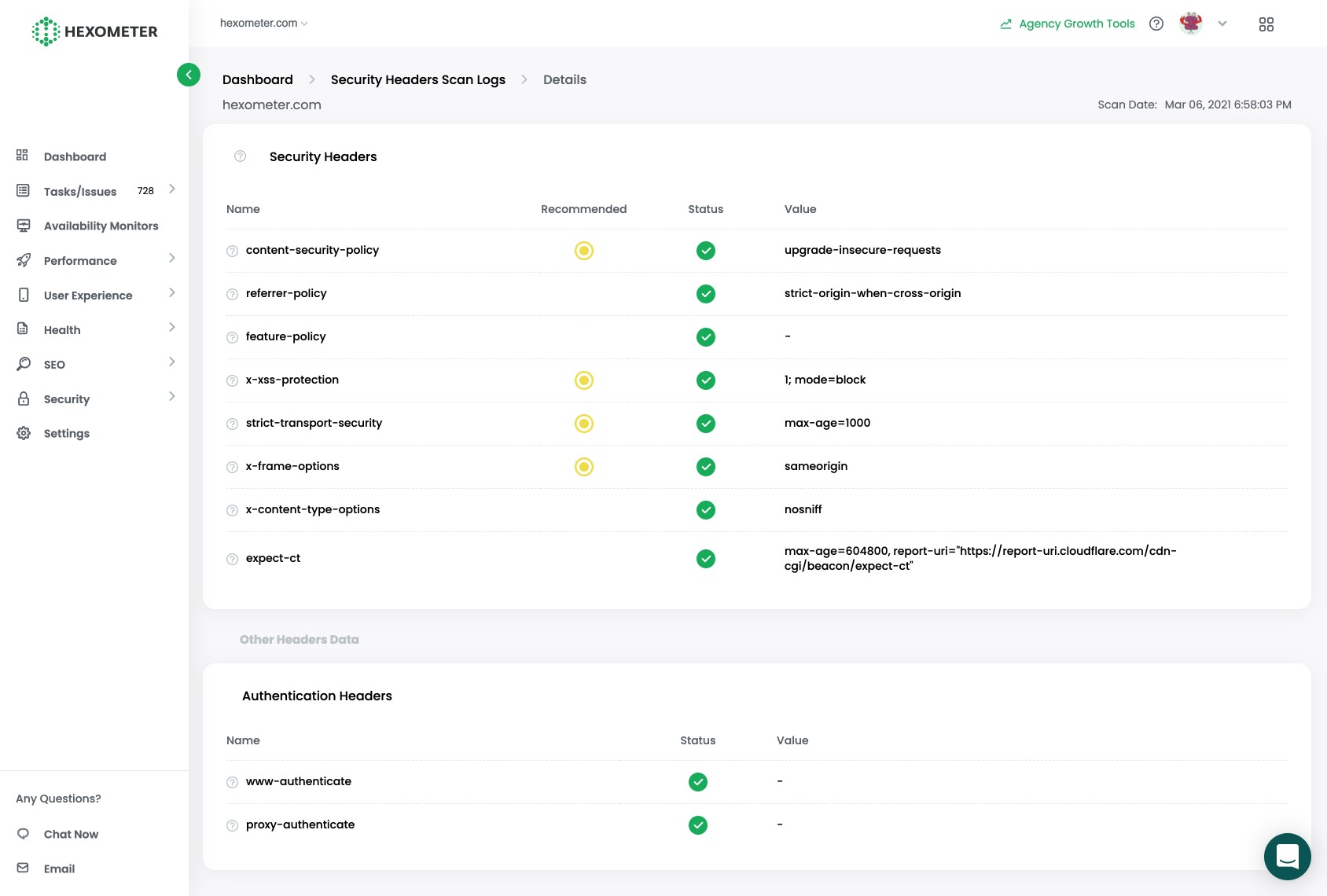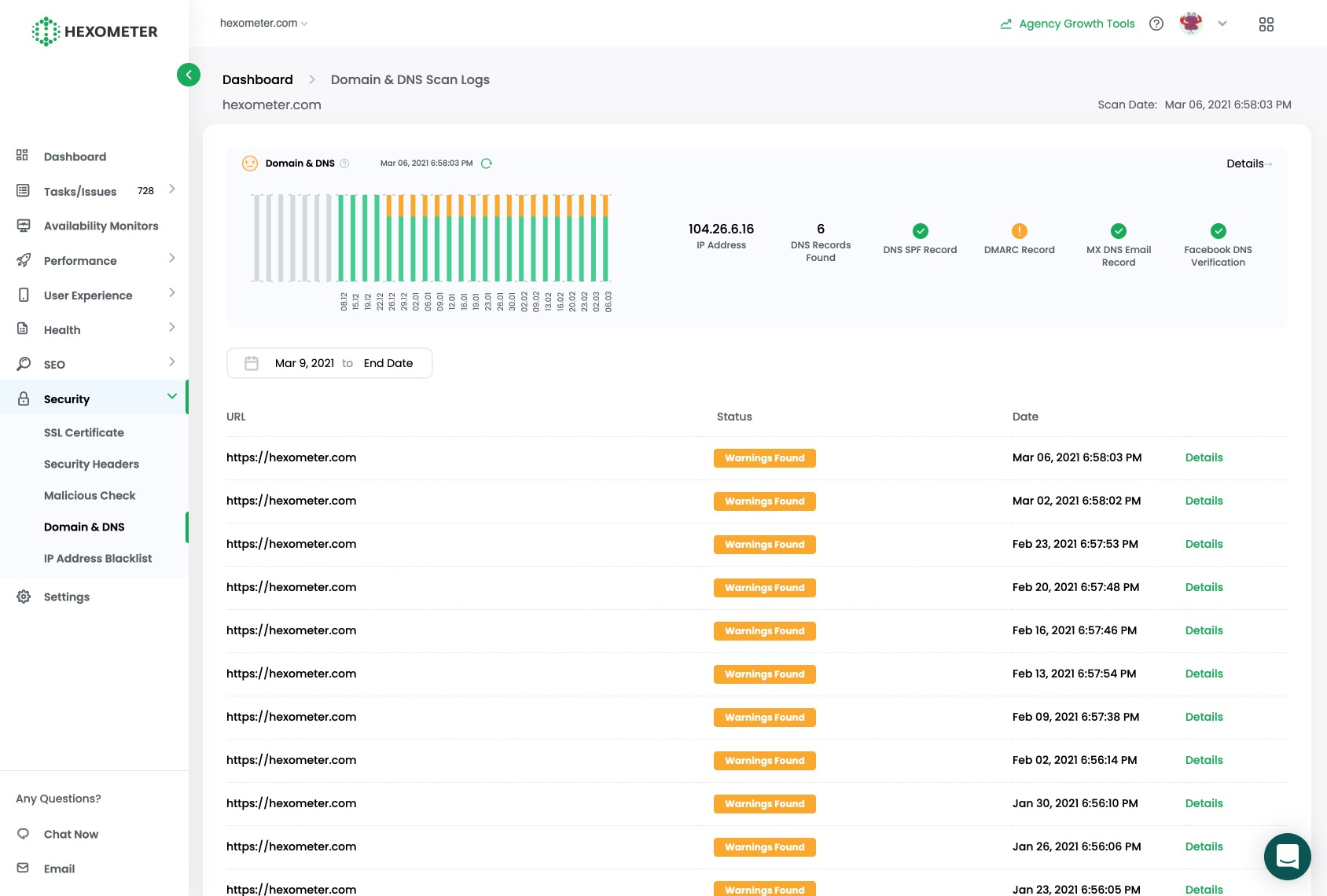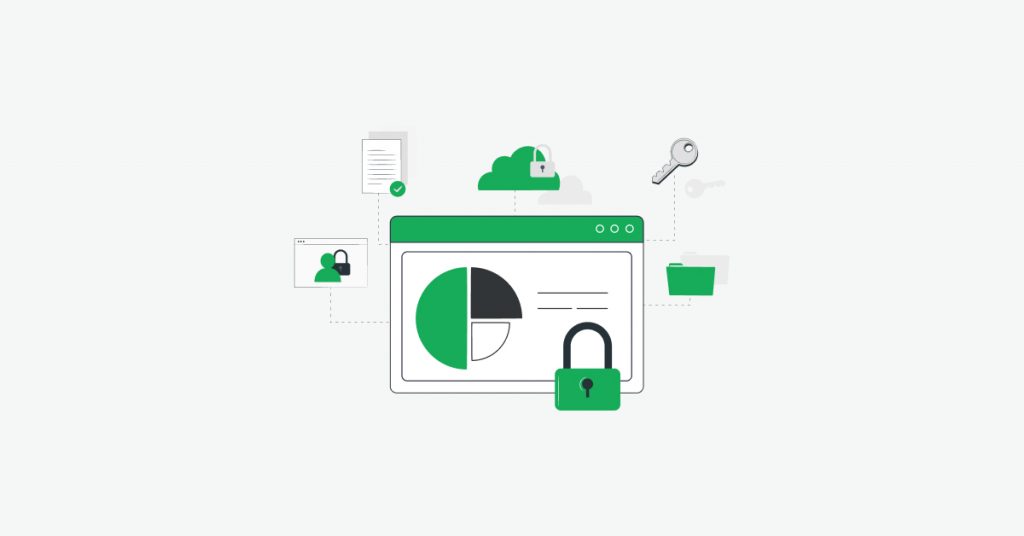Did you know that over thirty thousand websites are infected by some type of malware daily?
Security issues can cause downtime, loss of reputation, blacklisted search rankings as well as a steep cost to fix and restore your website.
In this tutorial we are going to walk you through how Hexometer monitors your site for security best practices and how you can bulletproof your website.
Once you upgrade to a paid plan, Hexometer will start monitoring your domain daily to catch potential security issues and will alert you should problems be detected.
You can access your security dashboard by clicking on the security section.

Your security score takes into consideration five key areas that can affect your website, let’s review how each one works:
SSL certificate monitoring
Your SSL certificate provides an encrypted link between your server and the browser or services accessing your website.

As part of its checks, Hexometer checks your SSL certificate to ensure that it’s valid and up to date, providing you with timely alerts when renewals are due.

Security header monitoring
HTTP security headers provide an extra layer of security for your website by mitigating security vulnerabilities. By keeping up with HTTP security headers best practices, your website or website application will be more secure. The good news is that implementing these headers is easy, and they only require a small change to the configuration of the web server.

As part of its comprehensive monitoring, Hexometer checks your HTTP security headers and alerts you when things need to be fixed.

Malicious code scanning
For additional peace of mind, Hexometer performs daily homepage scans looking for links to known unsafe web resources, social engineering sites, phishing, deceptive or malware.

Domain & DNS monitoring
As part of its security checks, Hexometer performs daily scans of your DNS, SPF, DMARC, MX and Facebook DNS verification records to ensure optimal security settings and deliverability.

IP address blacklist monitoring
IP address blacklists are used to report bad actors that have been flagged for spamming or other potential nefarious purposes.

But mail-server configuration issues, such as missing or incorrect reverse DNS records, missing or incorrect banner greetings, and mail servers operating within a suspicious range of IP addresses could also get your IP address flagged.
As part of its daily security monitoring, Hexometer continually checks if your domain IP addresses have been blacklisted by the leading security authorities.
Now that’s peace of mind.
CMO & Co-founder
Helping entrepreneurs automate and scale via growth hacking strategies.
Follow me on Twitter for life behind the scenes and my best learnings in the world of SaaS.
